Studio photograph of the graduating class of 1903. They are identified as: 1. Tatiyopa, Henry, 2. Kimball, John, 3. Ezhuna, Joseph, 4. Doxtator, Commodore, 5. Doxtator, Alice, 6. Brown, Lillian, 7. Hill, Amy, 8. Bishop, Frank, 9. Brushel, Samuel, 10. Callsen, Minnie, 11. Callsen, Katie…
Apache
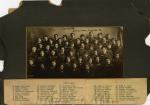
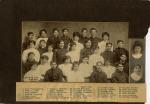
Studio portrait of the graduating class of 1906 with inserted single photos of two female students.
Students are marked with white numbers corresponding to the typed list of names below. They are:1. Yukkanatache, Dock, 2. Hill, Abram M., 3. Burrows, Emma, 4. Kingsley, Adeline, 5. Logan, Emma, 6. Bowen,…

Studio portrait of Richard Kesetta wearing uniform.
Note: Caption on image reads: Richard Kissitti / Age 4 years / Tribe Apache / Baby of the Indian School, Carlisle, pa.
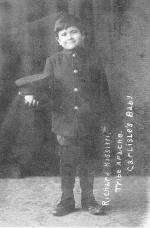
Studio portrait of Richard Kesetta wearing uniform.
Caption on image: Richard Kissitti / Tribe Apache / Carlisle's Baby
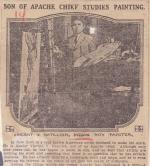
The headline reads: SON OF APACHE CHIEF STUDIES PAINTING.
The caption reads: VINCENT V. NATALISH, INDIAN BOY PAINTER.
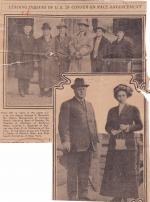
The headline reads: LEADING INDIANS OF U. S. TO CONFER ON RACE ADVANCEMENT
The caption reads: From left to right, in the upper picture, are Mayor George S. Marshall, Dr. Carlos Montezuma of Chicago, Henry Standing Bear of Dakota, Dr. Charles A. Eastman of Amherst, Mass., Charles E. Dagenett of Denver and Prof. F…

The handwritten note reads: Nov. 25, 1911. first snow.
The reverse side includes a short note from Tennyson Berry to an unidentified recipient.
View of Tennyson Berry's, or Ah-ko-beh-setine, house.
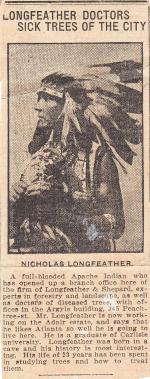
The caption reads: LONGFEATHER DOCTORS SICK TREES OF THE CITY
This image appears in the Atlanta Georgian on December 22, 1911. While attending Carlisle Longfeather went by the name Murphy Tarby.
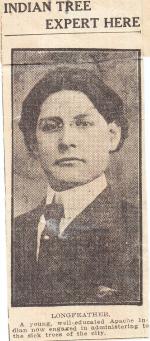
The caption reads: INDIAN TREE EXPERT HERE
This image appears in the Atlanta Constitution on January 9, 1912. While attending the school Longfeather used the name Murphy Tarby.
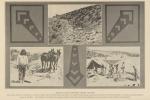
The caption reads: AGRICULTURAL PROGRESS AMONG INDIANS
The printed note reads: The Apache Indians of Arizona are counted as good workers by those who know them. (1) and (3) shows Apaches working on the road to the Roosevelt Dam. (2) shows an Apache teamster known as Fat Hen. The Indians of the…
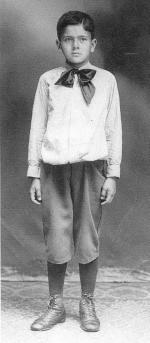
Studio portrait of Richard R. Kesetta wearing non-native clothing.
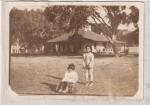
Lon Randolph Speeche playing outside with his sister Andrae Speeche. Children of Alonzo Speeche.
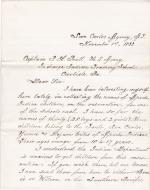
Richard Henry Pratt forwards a letter from Emmet Crawford, Captain 3rd Cavalry, regarding sending students to the Carlisle Indian School from the Tonto, San Carlos, Yuma, and Mojave bands of the Apache Nation. In addition to the students Crawford proposes sending a chief from each band in order to see the school and see the school for…
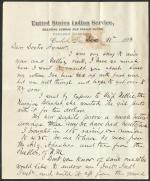
Superintendent Richard Henry Pratt writes to Dr. Cornelius Rea Agnew with an update on the school and the rising number of students. He also writes about his desire to find benefactors interested in creating a new Indian industrial school to accommodate more students. Transcript included.
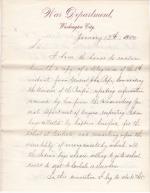
Major General John Pope telegraphs Robert Todd Lincoln, Secretary of War, regarding enrolling children from the Apache Nation at Carlisle or other schools.
Lincoln forwards a copy of the telegraph to the Secretary of the Interior along with a statement that Richard Henry Pratt had written him that he could enroll 50 to 75 Apache students…
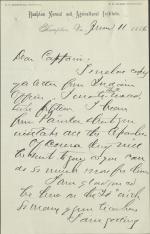
Samuel Chapman Armstrong of the Hampton Institute writes to Richard Henry Pratt about the potential enrollment of Chiricahua Apache prisoners of war at Hampton. Armstrong also includes a copy of the correspondence he received from the Acting Commissioner of Indian Affairs, A. B. Upshaw, about the possible enrollment.
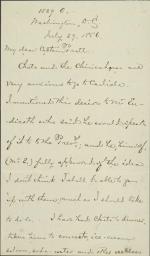
John G. Bourke writes to Richard Henry Pratt discussing the Chiricahua prisoners potentially coming to Carlisle. Bourke reports that he has spent time with Chato discussing the issue, and that there is a desire to release the children of the Chiricahua from Mexico quickly. Bourke notes that he has mentioned the Chiricahua's wish to go to…
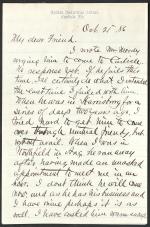
Superintendent Richard Henry Pratt writes to Doctor Cornelius Rea Agnew regarding attempts to get a Mr. Moody to visit Carlisle. Pratt also mentions that 75 or more Florida Apache prisoner children are expected to arrive at the school soon, and that the school was recently inspected by a Mrs. Clarke of Virginia. This letter is part…

These materials include a cover letter and Descriptive Statement of Pupils regarding 37 Chiricahua Apache prisoners-of-war transferred to the Carlisle Indian School from Fort Marion in St. Augustine, Florida, where a larger group of Geronimo's band remained imprisoned. The 37 individuals transferred to Carlisle represented a portion of all…
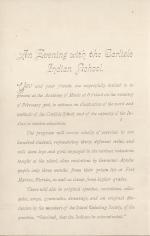
An invitation for a series of exercises, performed by Carlisle Indian School students, which include industrial demonstrations, recitations, songs, drawings, and a debate. The event was billed as a way to show "the capacity of the Indian to receive education," and was open to the general public.

These materials include a cover letter and a Descriptive Statement of Pupils regarding 61 individuals discharged from the Carlisle Indian School and transferred back to their homes in the San Carlos, Laguna, Wallace, Isleta, Quapaw, Eufaula, Omaha, Winnebago, Nez Perce, Crow, Kiowa and Comanche, Cheyenne and Arapaho, Ponca, Rosebud, and Pine…
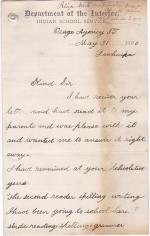
A series of twenty-three letters written to Captain Richard H. Pratt in response to a questionnaire sent to former students. The accompanying questionnaire forms are not included.
Transcripts follow each handwritten letter.
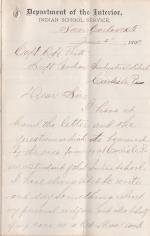
A series of sixteen letters written to Captain Richard H. Pratt in response to a questionnaire sent to former students. The accompanying questionnaire forms are not included.
Transcripts follow each handwritten letter.
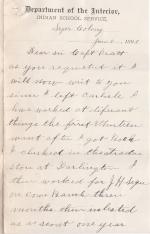
A series of fifteen letters written to Captain Richard H. Pratt in response to a questionnaire sent to former students. The accompanying questionnaire forms are not included.
Transcripts follow each handwritten letter.
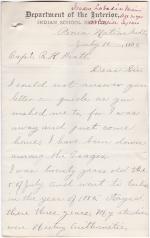
A series of nineteen letters written to Captain Richard H. Pratt in response to a questionnaire sent to former students. The accompanying questionnaire forms are not included.
Transcripts follow each handwritten letter.
